
Diademed Sifakas, Ranomafana
These two made sure to keep right above us we walked along the forest floor. As far as I could tell, they were swinging from tree and each other for the pure fun of it.
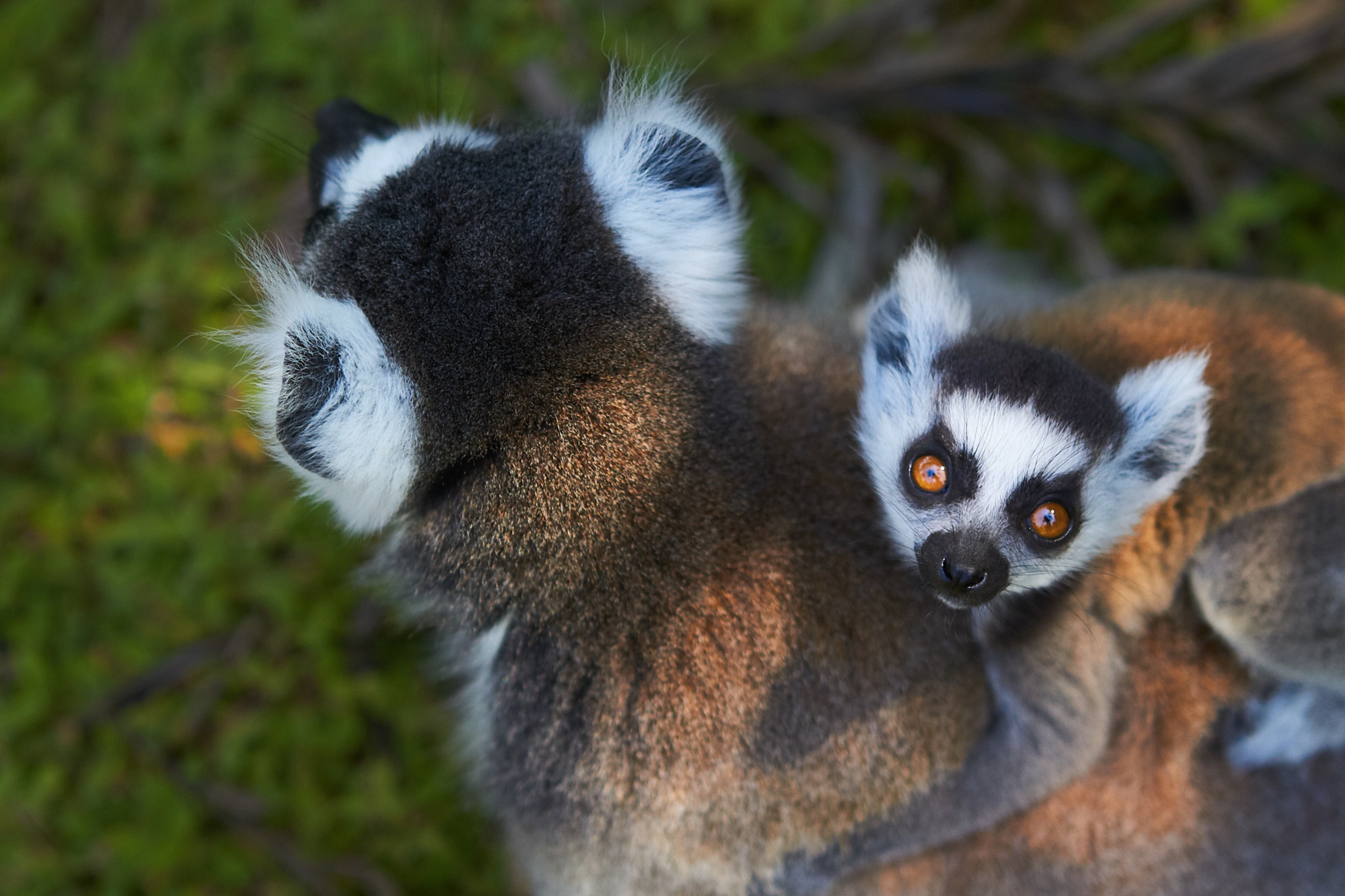
Ring Tailed Lemur with Infant
Many species of lemurs start life clung to their mothers until confident enough to bound and jump from great heights on their own.
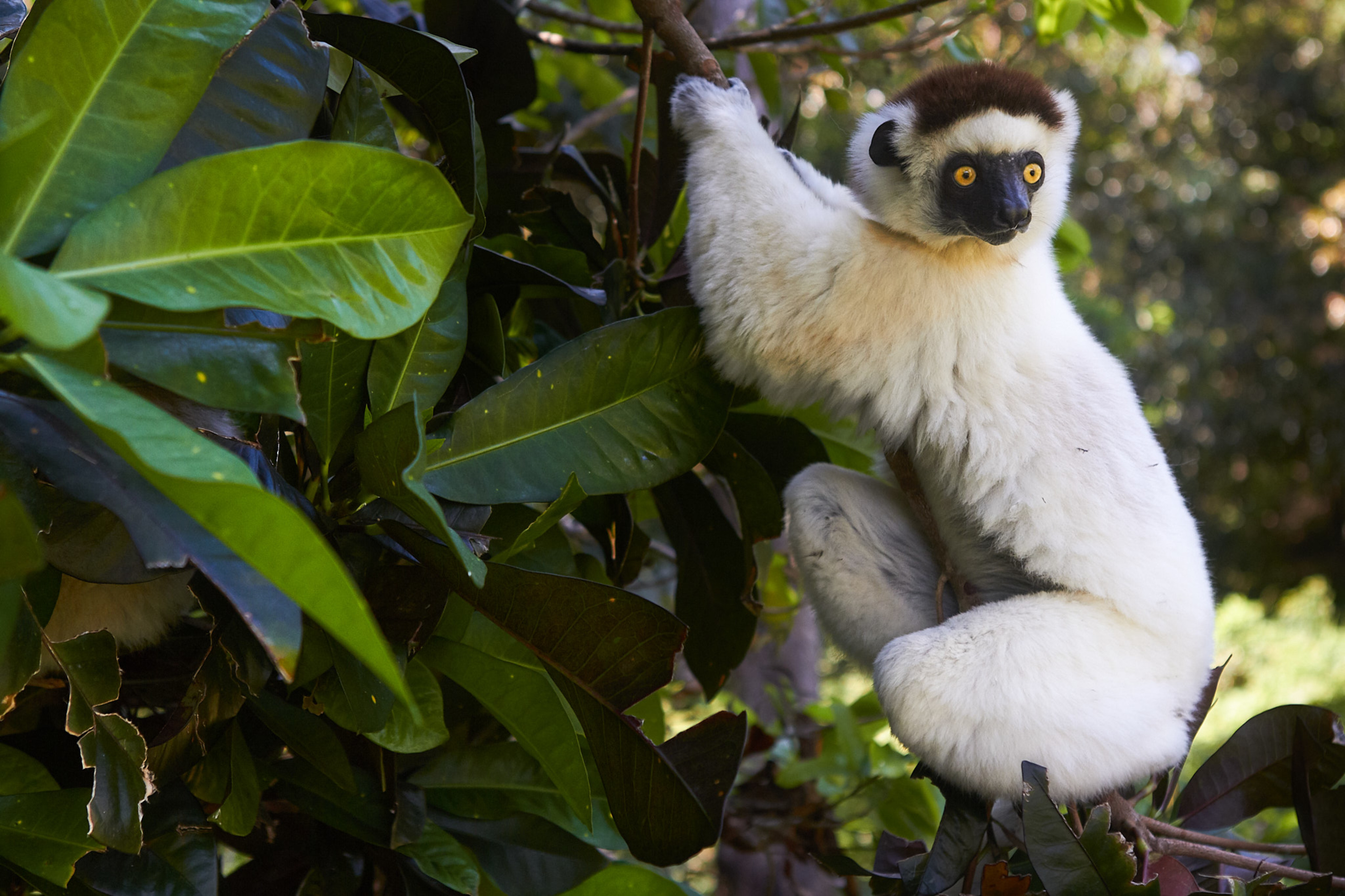
Verreaux's Sifaka, Fort Dauphin
In these large, former French botanical gardens, the Verreaux's Sifakas would shadow my route, habituated to the stream of visitors that might have food to share, but hang back a little, still wild and wary of anything that wasn't an opportunity to eat.
I became accustomed to them keeping their distance, gripping to trees at about my height, when not dancing along the ground on two legs. Chaos, as you can imagine, ensued when one Sifaka jumped from a tree behind me to a tree in front, misjudged, and smashed into my head.
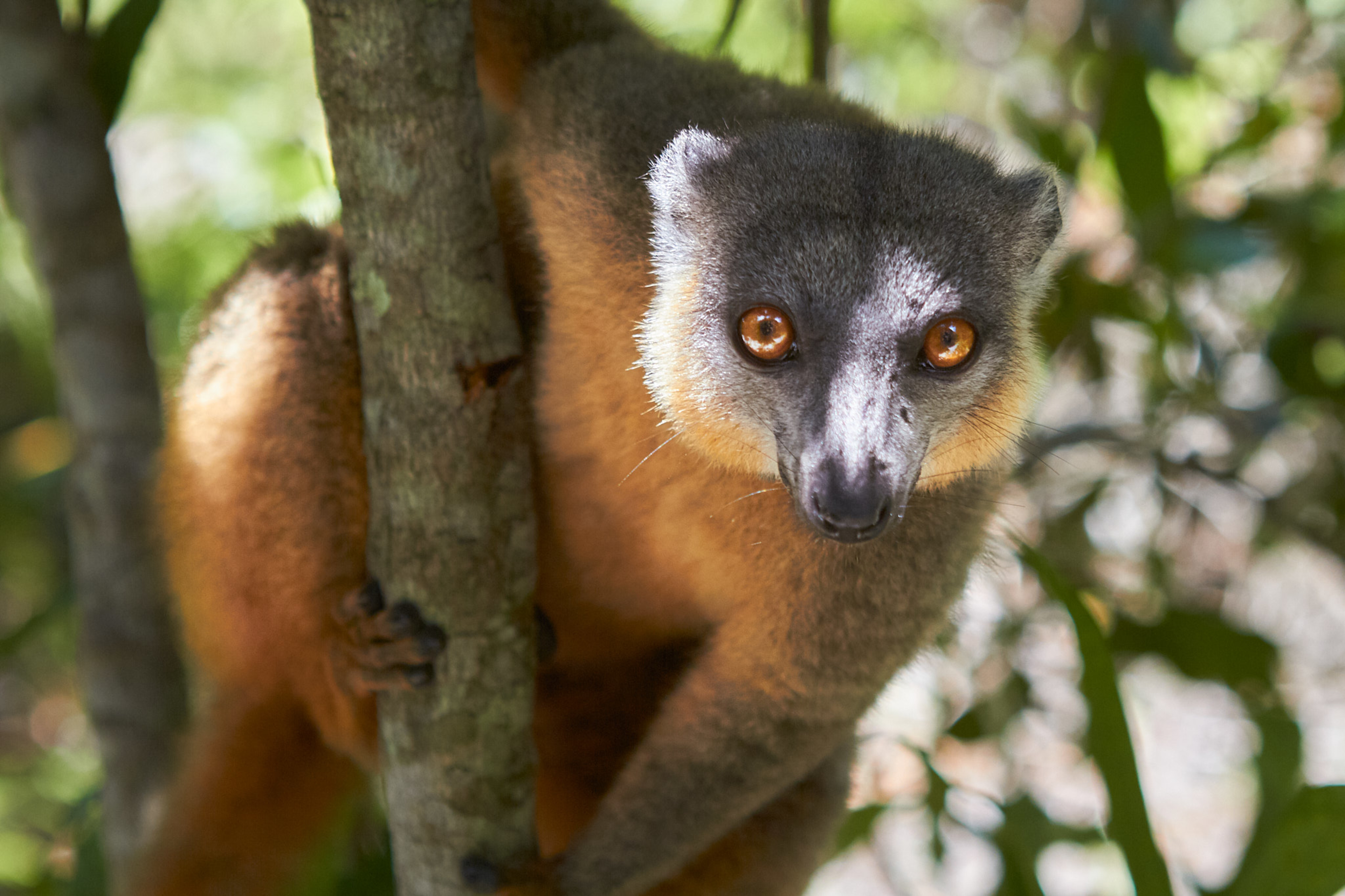
Collared Brown Lemur, Fort Dauphin
Collared Brown Lemurs won't approach people, but this group, while not habituated, had learned to feel reasonably safe getting a little closer, when picking berries from trees. The pig-like snorts and oinks that ruffle the trees on their approach is the happy giveaway that they've arrived.
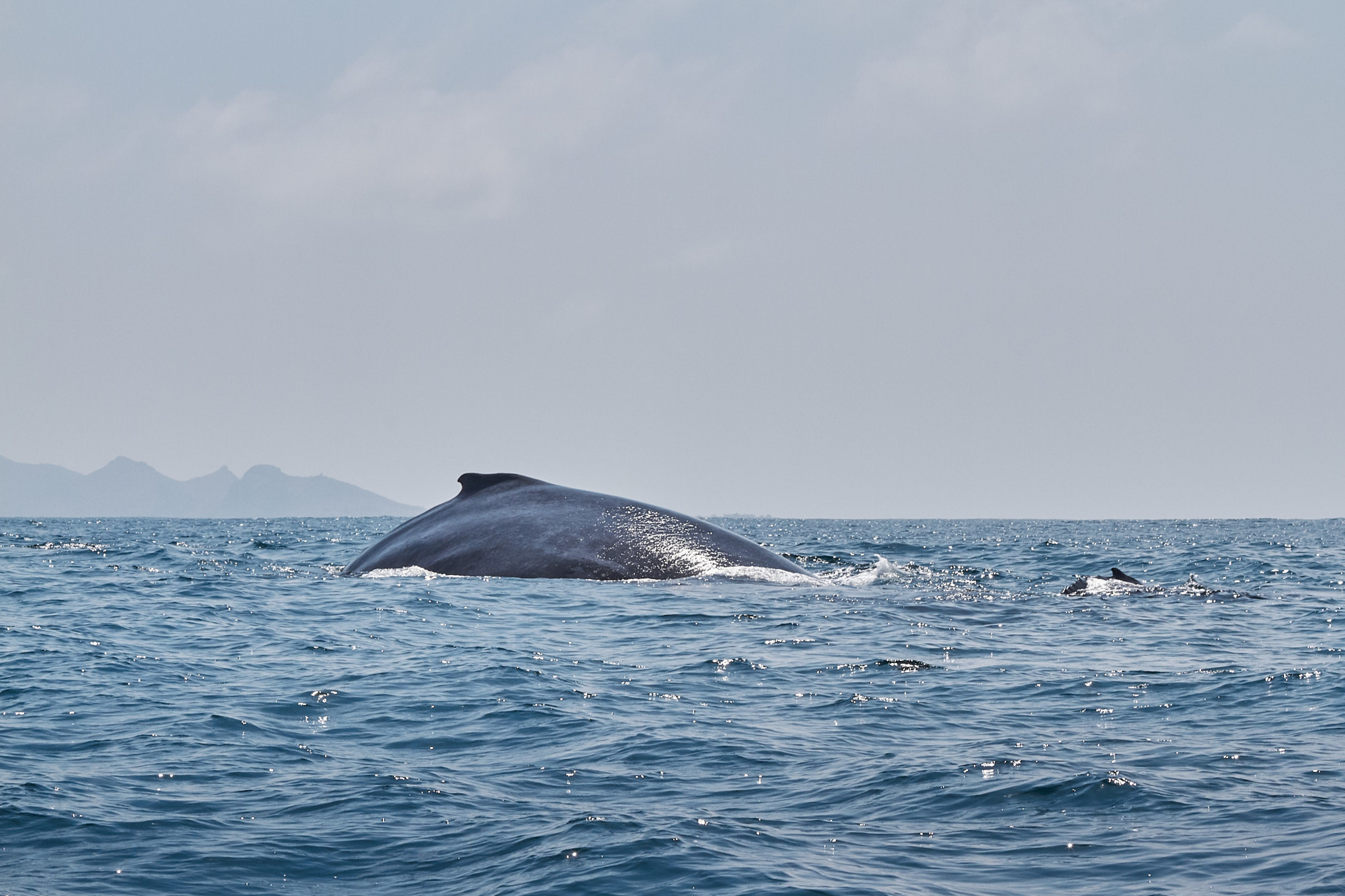
Humpback Whale, with Calf
The east coast of Madagascar is a frenzy of humpback whale activity from July to October. The whales migrate south from their nesting spot in Isle St Marie down to the Antarctic. Hugging the coast, there's regular breaches and spouts visible from the shore, as mothers guide calves on their first journey. If there's any sense that the younger ones are a bit worn out, the mother props them gently on her head until they feel able to continue.

Furcifer Verrucosus Chameleon
Sometimes mistaken for Panther Chameleons, these guys can arrive on tree branches in bright orange, pink and blue colours.
While it's a myth that they change colours to match their surroundings, they do change colour to indicate mood and other emotions. Which is why I was happy this guy was comfortable enough to be this close to the camera without fading to the white colour that typically indicates discomfort or fear.
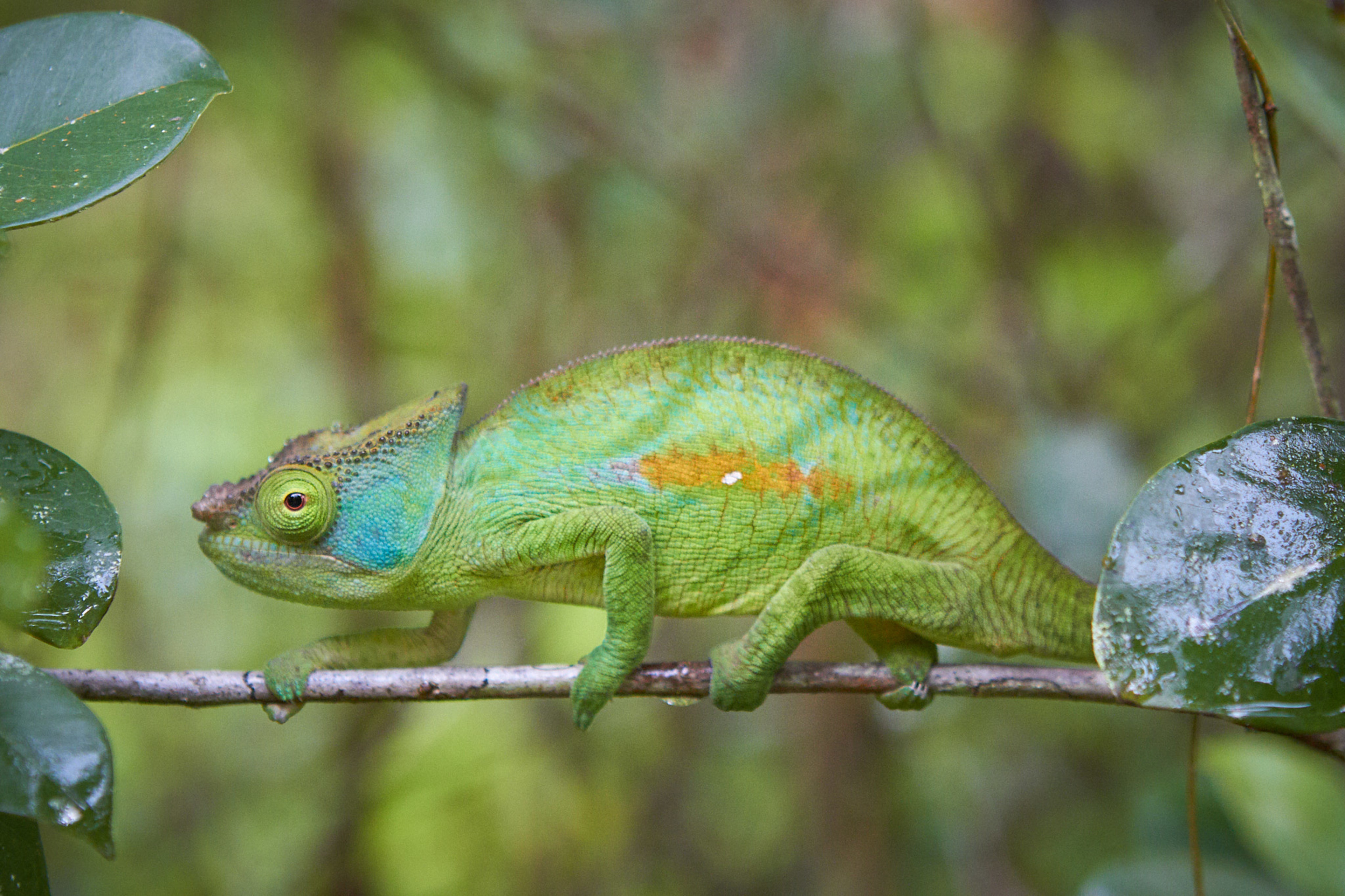
Pearson's Chameleon, Andasibe
The giveaway for the Pearson's Chameleon, besides it colouring, is the stubby nose that adds a lot of character alongside the disgruntled curve of the mouth, sliding under the eyes.

Ring-Tailed Mongoose, Bemaraha
Our hike across, up, and back down the razor-sharp tsingy karst formations led us through a cave into a cavern that was perfect for a calm moment to eat and rehydrate. So perfect, that it was clear it was a typical spot to do so and this ring-tailed mongoose had learned that crumbs or anything that falls are too good an opportunity to remain completely hidden for. It waited patiently just far enough away to be safe, but completely alert so that it could snatch whatever opportunity arose.
